After the fantastic touring of Bolivia, I went back to Peru.
I did this on a coach from La Paz to the town of Puno on the Peruvian shores of lake Titicaca. It was by far the most comfortable coach until then, even semi-empty, so I could really enjoy the extra space. There was a young German girl sitting behind me and we didn’t talk during the trip, but when we got to Puno she approached me and asked if I spoke English. As it turned out, she didn’t speak Spanish and was travelling alone, so she asked for some assistance. I helped her, of course, and we actually ended up sharing a taxi that took us to our respective hotels. It also became clear during this taxi ride that we both wanted to go on the same trip the following day, so we parted with a hope that we may see each other again.
And so we did. As the chance would have it, we were even in the same group which was truly amazing given the large number of groups and boats. It was then that I learned her name, Jana, and that she was from Hamburg. There were also a few young Italians in our group. I found it very interesting and fun to watch all of them. Jana was a very pretty girl and these young men spent the whole day trying to impress her.
First we went to one of the floating islands. These islands are called the Uros floating islands. In the shallow water of Titicaca grows in abundance a type of reed that is called tortora. The residents of these islands pile up a large number of layers of the reed, thus creating islands that are habitable and that indeed float on the surface of the lake. When walking on them, the “ground” is rather soft and the feet impress mildly into the reed, but nonetheless the islands have huts built also from the reed that were traditionally used in the past by members of the Uros tribe. Nowadays they mostly live on the shore, but continue to come here because of the tourists. And that was precisely what I didn’t like about the islands at all.
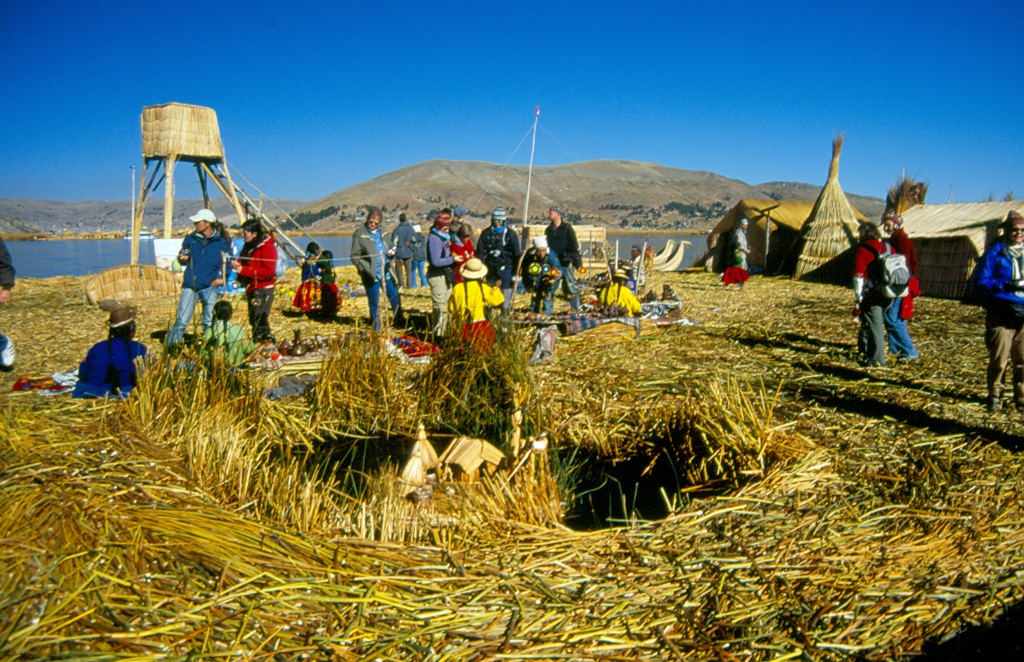 Visiting the Uros floating islands on the lake of Titicaca
Visiting the Uros floating islands on the lake of Titicaca
I have to say that I truly wanted to see and visit the islands, and I am in fact very glad that I did it, but I was also very disappointed and I think they are not worth more than a 10-minute visit. Regardless of all the effort and intentions, nothing seemed authentic to me there and everything seemed like a staged play. One walks and looks around, and then comes across an elderly woman who “spontaneously” sits on the ground grinding maize by placing grains on one stone and using another crescent-shaped one to crush them. And there was no other better place for the house chore than in the middle of the “yard” in front of a hut.
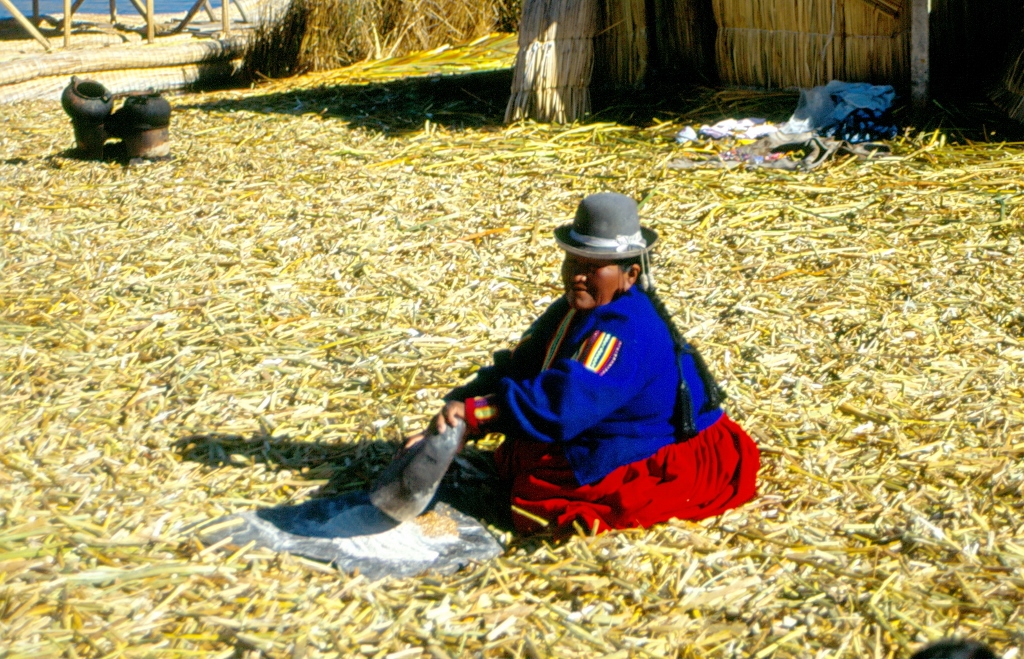 “Spontaneous” grinding of maize
“Spontaneous” grinding of maize
I also wondered if the clothes worn by the local residents were truly their daily attire or if they were only the costumes for the play. On the other hand, as they were there and as the whole scene had been set, I started to take photos of it all.
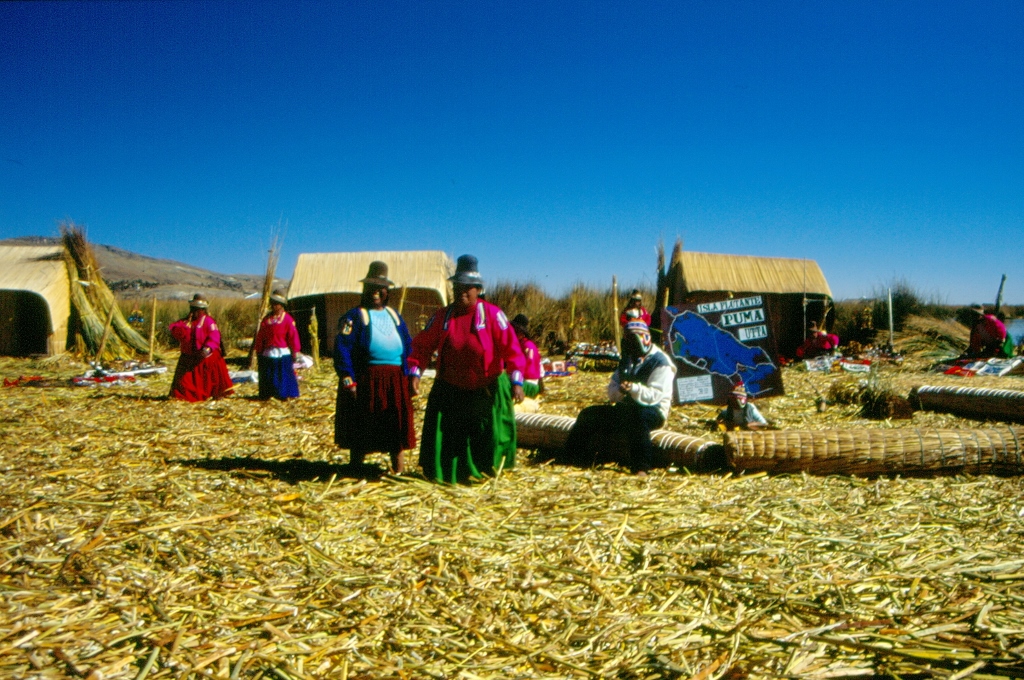 Local population on the Uros floating islands
Local population on the Uros floating islands
Since one cannot live from posing for photos alone, the main activity is still sale of souvenirs and handicrafts. And these are the same souvenirs and the same handicrafts that can be found throughout the Andes. On the other hand, I am probably far too harsh and cynical, because tourists who come to Titicaca visit these places almost obligatorily, so it is all quite normal. But, I still didn’t like it.
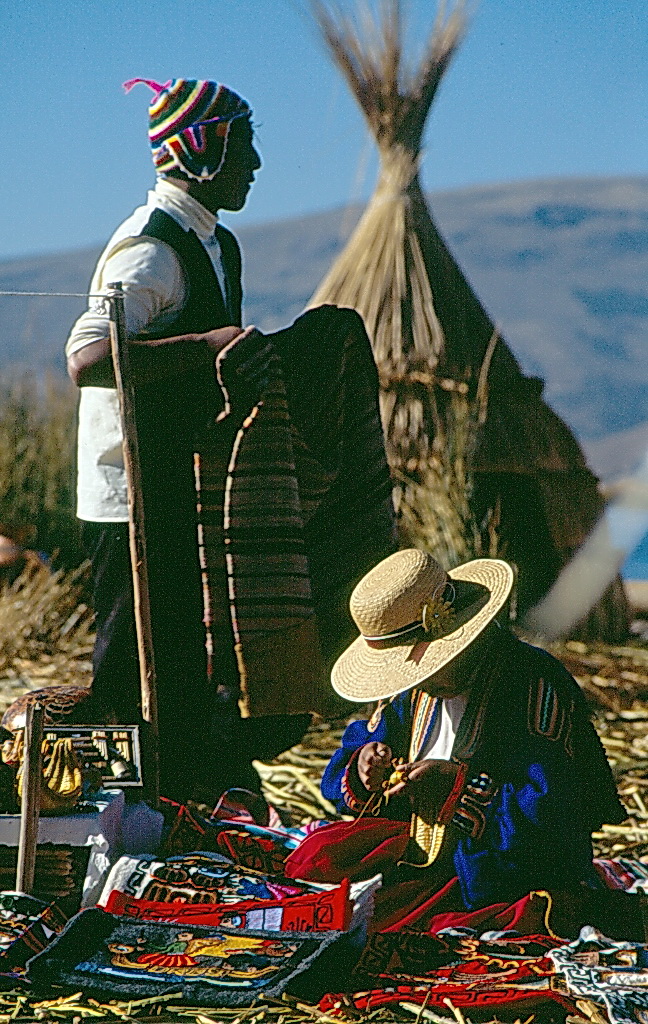 Sale of handicrafts on the Uros floating islands
Sale of handicrafts on the Uros floating islands
It also needs to be said that the tortora reed is broadly useful. When tied well together, it does not allow for water to pass through and thus it is used in the making of boats.
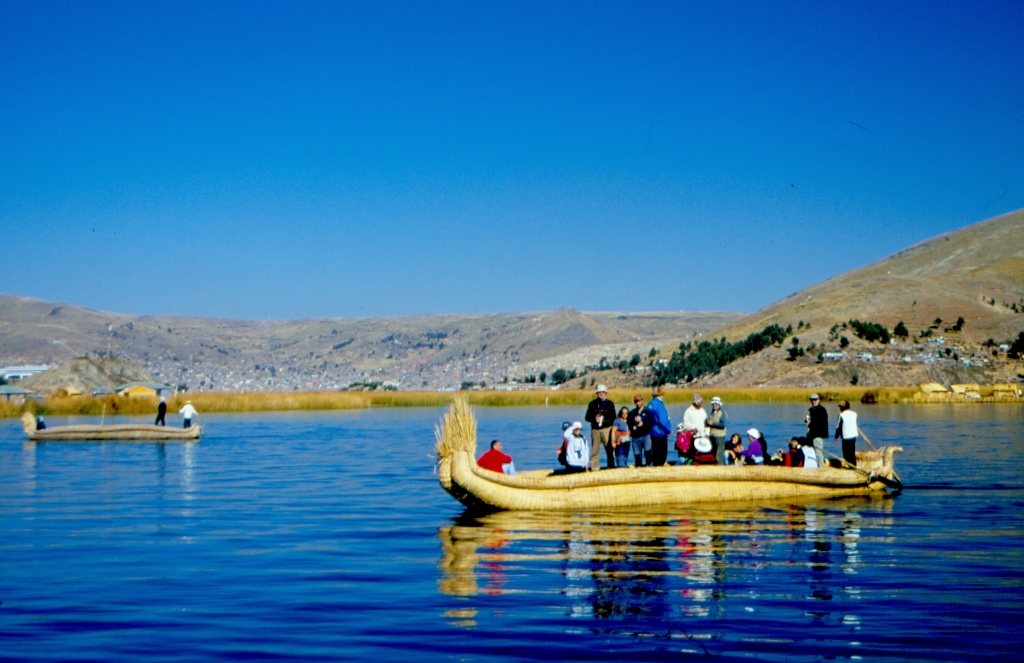 Tortora reed boats
Tortora reed boats
After the visit to the floating islands and a couple of hours of sailing, our big metal boat took us to one of the proper islands that are located on the Peruvian side. The island’s name is Taquile. When we got to the island and disembarked, first there was a significant going up an elevation and walking, which I actually liked as a fine physical exercise on a lovely sunny day. The goal of this walking was to get to a square that was on top of the hill with numerous tables placed around the square. The plan was to have a meal there and then to go down to the port from the other side. In addition to the tourists, there was a lot of the local population in the square. Some offered to be taken photos of in exchange for money, while others simply directly begged. This was mostly done by children who asked for food and money or anything else that could be given to them. I did have a bag of candies bought for the occasion and I gave it to the kids, but there was nothing about it that made me like the experience. And it was not only children who were involved in the tourist offer. The elderly also gave their active contribution. For instance, when I started to descend towards the boat, the path led between low houses. There I came across a granny who walked apparently unsuspectingly and span wool as she walked. Her technique was very specific and she pulled the spindle across the ground beside her almost like a spinning top on a leash. I must admit it was very original in comparison to the traditional technique in my country which requires sitting, but it was evident that this was another set up, with no spontaneity whatsoever, the goal of which was to attract passing tourists into taking photos and paying. I actually don’t think she was spinning wool at all, but rather they were all just props for the “role” and the ethno-motive for foreign tourists. The guide had told us that the residents of the island, some 2000 of them, lived so traditionally that almost nobody had turned professional in terms of completing any serious education. This may probably be a question of the lack of motivation, too. With the regular arrivals of foreign tourists who like picturesque costumes, photos with local population and the experience of generosity for little money, where is the motive to learn all day long without any secure prospect for a regular and well paid job?
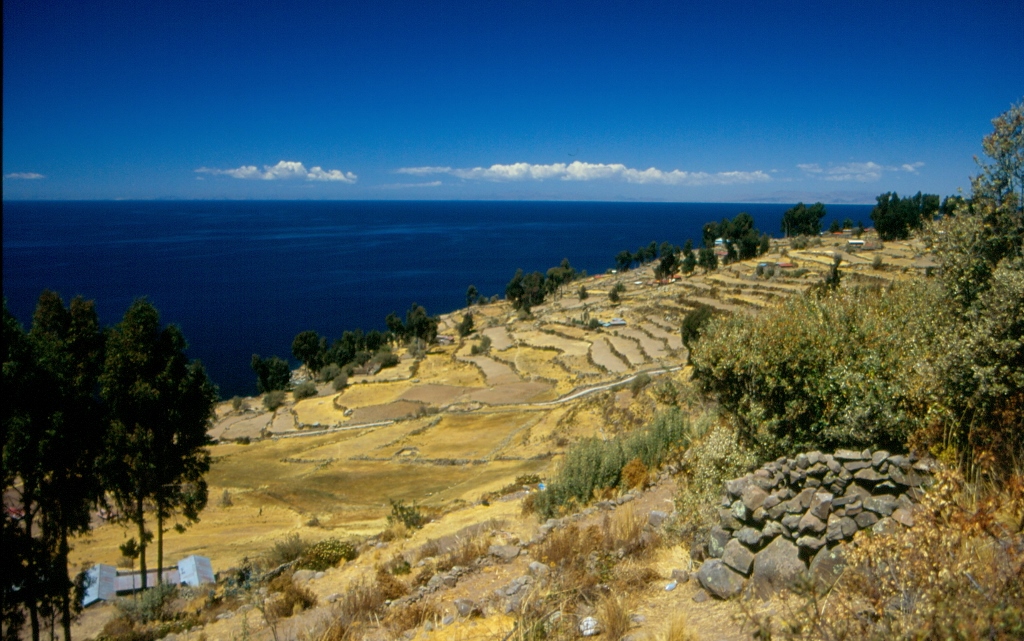 Taquile island
Taquile island
In other words, the Taquile island also didn’t make a very good impression on me. After going down to the lake using a rather steep path, we all gathered on the boat again and headed back to Puno. And then I finally spotted something interesting. The tourists on the boat were joined by a man who apparently lived on Taquile and who took advantage of our boat in order to get to the shore. As we were sailing, he was knitting something colourful and he was doing it incredibly skilfully. I know how to knit and was truly amazed by the skilfulness of this man. The guide had told us earlier that people on the island have a very unusual tradition. Women make clothing for their husbands and men do the same for their wives. I don’t know what this person was knitting exactly, but I was sure it would fit his spouse to perfection.
After some three hours of sailing across the lake, we arrived in Puno and there we all agreed when and where to meet later. I first went to confirm my reservation for the day after and then to the hotel where I had a brief rest. In the evening, I went to meet with Jana and then together we went to meet with those Italians I have mentioned, as well as a couple of Portuguese and a Spanish guy. We all went for dinner together and it was very merry and lots of fun, so we stayed until midnight. Eventually, with a lot of smiles and good wishes we parted. They were all younger than me and didn’t want to miss out on the night entertainment, so they decided to go to a local disco club. I was very content that I could retire to my hotel and go to sleep.